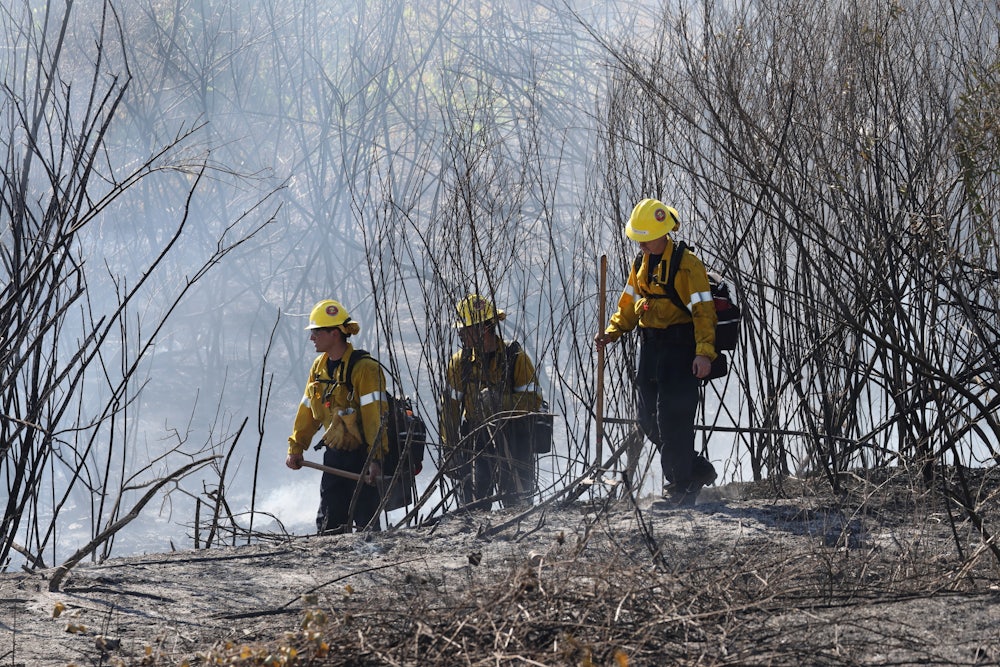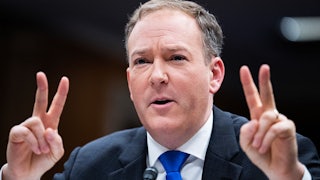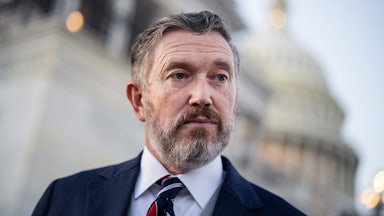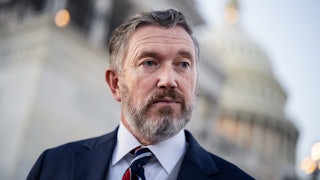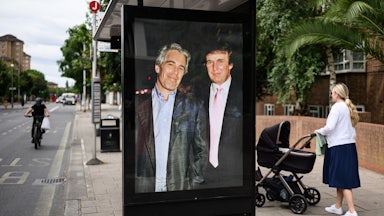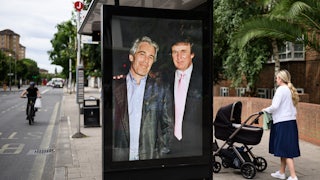In the 1970s, not long after Bobbie Scopa first started working as a federal wildfire fighter, she was dispatched to a blaze that—at the time—seemed extraordinary. It spanned 12,000 acres. “Our supervisor said, ‘This is the biggest fire you’re ever going to see in your career,’” recalled Scopa, who spent 45 years as a firefighter before retiring, including seven years as the assistant fire director for all of the U.S. Forest Service’s wildland fire operations in Oregon. Today, 12,000 acres is nothing. “Fires now, we don’t even call them big fires until they get over 100,000 acres,” the official qualification for a megafire, Scopa told me. When we spoke on July 21, Eastern Oregon’s Cram Fire had just crossed that threshold.
The reason for the dramatic change in scale isn’t hard to discern. “Anyone who can read graphs can see that it’s hotter and drier now than it was 10 years, 20, or 40 years ago,” Scopa told me. “Climate change is real, and it’s affecting the fire environment.” Warmer, drier conditions create more kindling, which allows fires to burn hotter and faster; less snow in fire-prone ecosystems similarly means less moisture. As a college student, when Scopa first started firefighting, she would “leave school and go directly to a crew,” just before the beginning of the fall semester. These days, that would be difficult to do. “The fire seasons are so much longer,” Scopa explained. “It starts sooner in the spring, the snow melt goes off earlier, and it doesn’t start raining and cooling off until later.”
As rising temperatures change wildfires, they’re also changing what it means to be a firefighter. Fires today demand longer deployments and inflict more stress on the body and mind. And while these problems have been mounting for years, the Trump administration’s climate denial is now colliding with its quest to shrink and incapacitate the federal workforce. Federal firefighters—spread across government land management agencies—are on the front lines of both crises, facing dire staffing shortages and bureaucratic chaos on top of shockingly meager pay, benefits, and protections.
Amid disturbing headlines about firefighters being forced to scrub toilets because of staffing shortages, the White House has projected confidence. Agriculture Secretary Brooke Rollins—whose department oversees the U.S. Forest Service’s 11,000- person firefighting workforce—boasted earlier this summer about “far outpacing the rate of hiring and onboarding over the past three years and in the previous administration.” The department now claims to have met 99 percent of its hiring goals for wildland firefighters.
The reality doesn’t remotely support her declaration. Last year, the U.S. Forest service was already facing a 45 percent attrition rate among permanent employees. Reporting from ProPublica last week revealed that more than 4,500 Forest Service firefighting jobs—up to 27 percent of those positions—were still vacant as of July 17. A recent survey by Forest Service fire managers in California found that 26 percent of engine captain positions and 42 percent of engineer positions were vacant. ProPublica further revealed a frantic letter circulated among high-ranking Forest Service officials by its chief, Tom Schultz. “As expected, the 2025 Fire Year is proving to be extremely challenging,” he wrote. “We know the demand for resources outpaces their availability.”
The administration’s claims about being well equipped to fight fires are selective, at best. Of the estimated 4,000 U.S. Forest Service employees believed to have taken the so-called Department of Government Efficiency’s deferred resignation offer earlier this year, about 1,600 were believed to hold red cards—“a drivers license to fight fires,” according to Warner Vanderheuel, a USF firefighter and the president of the National Federation of Federal Employees-Forest Service Council. Large fires require “a whole camp set-up,” Vanderheuel said, that can involve several thousand people to make sure equipment is working, track hours, and manage contracts for things like catering, laundry, and portable toilets. “All of those positions require qualification, but 95 percent are not primary firefighters,” i.e., those actually building firelines and suppressing flames. Often, the firefighters are the lowest-paid people on site.
In the best of times, that is, wildland firefighting is thankless work. It’s hot, dirty, and dangerous. Hotshot crews—elite firefighters dispatched like the Special Forces to blazes around the country—scramble up mountains with axes and chain saws. Smokejumpers skydive into fires in remote areas. For all the risk involved—and the obvious benefit to the public of keeping flames away from homes, towns, and cities—many federal firefighters still earn as little $15 an hour, work hundreds of hours in overtime to make ends meet, and often resort to passing around GoFundMe links to cover the expense of injuries incurred on the job. At the end of fire season, temporary firefighters are typically laid off; many go on unemployment.
During the Biden administration, in 2021, lawmakers approved a temporary retention bonus for federal firefighters, providing them with the lesser of either $20,000 per year or 50 percent of their base pay. In March, Congress voted to make pay hikes permanent. By way of a continuing resolution to keep the government funded, Capitol Hill furnished wildland firefighters with a more than 30 percent raise compared to 2021 levels. The raise was a massive win for Vanderheuel’s union, and one that was hard to celebrate given other concerns. Federal firefighting has long been plagued by bureaucratic struggles; Forest Service regions each have different protocols and approval processes, and coordinating among federal land management agencies, including the Department of Interior, can be challenging. The Trump administration has brought new genres of frustration. Limits of $1 on federal credit cards made buying supplies, equipment, and hotel stays virtually impossible, requiring firefighters to wade through a thicket of red tape. In some cases, just a single federal employee was tasked with approving purchases for the entire forest, whether for trail maintenance, recreational facilities, or firefighting. While many cards have been restored, Vanderheuel said, “it’s still very limited.”
Firefighters in some regions have been handed lists of items that—save for a select few circumstances—can no longer be purchased with federal funds. One such list, reviewed by The New Republic, forbids chapstick, lotion, sunscreen, Midol, and “Feminine Products.” (Roughly 16 percent of the federal firefighting workforce, more than 2,700 people, are women.)
Worsening recruitment issues is the fact that, even for those who love firefighting, there are better prospects than the federal workforce. CalFire firefighters—tasked with both California’s public and privately owned lands—earn an average of $40 an hour, with a union contract that caps workers at a comparatively short 66-hour workweek. The wild beauty of fire-prone parts of the country has drawn in new residents, as well, who join the many who opted to relocate to more scenic locales during pandemic-era lockdowns. That influx, combined with inflation, can drive up home prices, making it harder for firefighters to live there on modest wages. The new development—coursing out of cities and into more rural, flammable areas—can heighten the risk of wildfire damage too, making the proscribed burns needed to maintain healthy forests a harder sell.
As a yearslong investigation by ProPublica’s Abe Streep details, beyond the health of the forests, firefighters’ own health is a growing concern. Research into the long-term health effects of wildland firefighting is relatively sparse but alarming. One peer-reviewed paper from 2008 projected that wildland firefighters’ incidences of lung cancer would be elevated by between 8 percent and 43 percent compared to the general population. A study released last December by the National Institute of Standards and Technology found that gloves, hoods, and protective gear worn by wildland firefighters “often contain measurable amounts of potentially cancer-causing chemicals called PFAS.” Impacts on mental health are even less studied. The best available data suggests that firefighters screen positively for PTSD at rates four times as great as the general population and experience high rates of suicide and depression.
It’s unlikely we’ll be able to find out more about such effects anytime soon, at least with federal backing. The Trump administration laid off nearly all the employees researching the topic at the National Institute of Occupational Safety and Health. On April 1, ProPublica’s Mark Olalde reported, the White House began cutting nearly all staff working on the National Firefighter Registry for Cancer.
Finding affordable treatment for these ailments isn’t easy. Permanent employees—i.e., those who work through a certain number of pay periods throughout the season—can opt to extend their federal employee health care coverage in the off-season and pick up part of the tab. Temporary employees don’t receive health care unless they opt to pay for it themselves—an expense that’s generally out of reach for firefighters taking home such modest paychecks. While all federal firefighters are eligible for workers’ compensation, seeking out coverage can be a bureaucratic nightmare.
Bobbie Scopa now serves as the executive secretary of Grassroots Wildland Firefighters, a network of active and retired federal wildland firefighters that’s taken on health and well-being as a core cause. Earlier this year, she and other advocates celebrated the Department of Labor’s hard-won move to fast-track workers’ compensation claims from federal firefighters for several cancers now considered to be occupational hazards, including melanoma and lung, brain, testicular, and thyroid cancers. Inexplicably, the Trump administration weeks later deleted breast, ovarian, and other cancers that primarily afflict women and transgender firefighters from the list of conditions eligible for fast-tracked, presumptive coverage. (A spokesperson for the workers’ compensation office declined to provide additional details to KFF Health News in February.)
“We don’t do anything to minimize or prevent exposure,” Scopa said. “We don’t wear breathing apparatuses on the line. Our folks are breathing crap for some days all day long, 24 hours sometimes.” As temperatures rise and the fire season expands, the risks of that exposure will likely go up too. “We don’t know just how bad the conditions are going to be for those young folks breathing smoke for six or eight months out of the year.”
